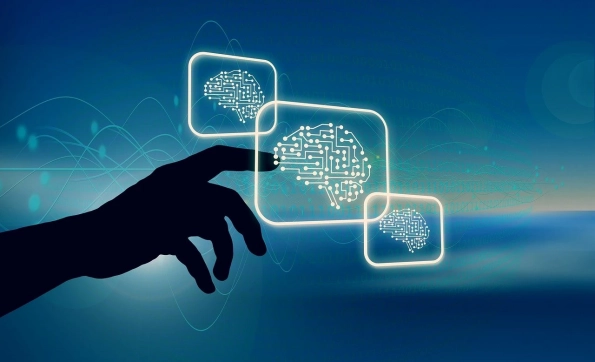In an ever-evolving threat landscape, securing sensitive data is paramount. The convergence of AI and identity security presents a robust approach to protecting information assets, ensuring that organizations stay ahead of cyber adversaries. This article delves into the recent advancements in AI and identity security and explores their potential to shape the future of information protection.
The Emergence of AI in Cybersecurity
AI-Powered Case Management Solutions
The impact of Artificial Intelligence (AI) on cybersecurity is becoming increasingly evident as companies adopt sophisticated tools for crime and compliance management. One notable example is Oracle’s Financial Services Crime and Compliance Management Investigation Hub. Integrated with Oracle Cloud Infrastructure (OCI), this AI-powered platform automates many manual tasks, allowing analysts to focus on the most critical activities. By reducing data silos and providing a unified interface, it enhances the efficiency and effectiveness of financial crime investigations. This reflects a growing trend where AI integration is vital for streamlining security workflows and improving analytical accuracy.
The Oracle platform’s ability to seamlessly integrate with other Oracle Financial Crime and Compliance Management Cloud Service (FCCM) solutions and third-party data providers further boosts its overall utility. This seamless integration means that data from various sources can be consolidated and analyzed in a coherent manner, eliminating the inefficiencies caused by fragmented or isolated datasets. The configurable interface and automation features reduce the need for repetitive manual tasks, allowing security professionals to dedicate more time and resources to identifying genuine threats and ensuring regulatory compliance. This advancement underscores how critical AI has become in enhancing the effectiveness and precision of cybersecurity efforts.
Enhancements in Fraud Detection
AI’s role in fraud detection is another area where its importance cannot be overstated. Companies like Trulioo have launched new capabilities that leverage AI to provide predictive risk insights globally. Trulioo’s Fraud Intelligence platform integrates sophisticated fraud signals and monitoring via a single API, offering extensive fraud indicators for emails, phones, and IP addresses. This comprehensive approach allows for the quicker and more accurate identification of potential threats, thereby fortifying real-time fraud prevention and significantly reducing the risk of financial losses.
The technology behind Trulioo’s platform is designed to streamline integration processes and reduce the time to market, making it easier for companies to adopt and implement these advanced fraud detection tools. By offering developers enhanced accessibility to comprehensive fraud prevention mechanisms, Trulioo is not only advancing the state of fraud detection but also simplifying its application across different sectors. The predictive nature of the intelligence provided means that organizations can proactively address vulnerabilities before they are exploited, thus maintaining a more secure operational environment. These advancements exemplify the transformative power of AI in safeguarding against fraud and elevating overall security standards.
Securing Non-Human Identities
Understanding Non-Human Identities (NHIs)
As the reliance on technology and automated systems grows, the importance of securing non-human identities (NHIs) becomes increasingly evident. Clutch Security’s introduction of the NHI Index underscores this necessity by emphasizing the role of machine identities in modern enterprise infrastructures. NHIs include entities such as service accounts, machine agents, and other automated processes that interact with enterprise systems on a daily basis. These identities are crucial for the seamless operation of various applications and services, yet they are often overlooked in traditional security measures, presenting a significant vulnerability.
The NHI Index provides organizations with practical guides for establishing secure connections and minimizing static NHIs. Static NHIs often serve as weak points that can be exploited by cyber adversaries to gain unauthorized access to systems. By addressing these vulnerabilities, Clutch Security aims to enhance the overall security posture of enterprises, ensuring that all identities—human and non-human—are adequately protected. The comprehensive nature of the NHI Index, which catalogs NHIs used across cloud providers, SaaS platforms, and CI/CD solutions, represents a significant step forward in the effort to secure machine identities and reduce potential attack surfaces.
Reducing Attack Surfaces with NHIs
The primary goal of the NHI Index by Clutch Security is not only to catalog various NHIs across different platforms but also to provide robust strategies for reducing attack surfaces. By offering practical, actionable recommendations, Clutch Security equips organizations with the tools needed to protect these often vulnerable components of their IT infrastructure. Strategies include the creation of dynamic, short-lived credentials and the use of secure communication channels to ensure that NHIs are not easily compromised. This resource is invaluable for organizations committed to bolstering their defenses against sophisticated cyber threats that target machine identities.
In light of the increasing reliance on automated systems and CI/CD pipelines, the need for robust NHI security measures becomes more evident. Attackers are constantly devising new methods to exploit vulnerabilities in automated processes, and securing these non-human elements is crucial to maintaining the integrity of enterprise infrastructures. The efforts by Clutch Security to provide a detailed and practical framework for NHI security reflect an industry-wide recognition of this emerging challenge. By focusing on reducing the attack surfaces associated with NHIs, organizations can significantly enhance their overall cybersecurity posture and better protect their valuable information assets.
The Growing Importance of Identity Analytics
Enhancing Digital Identity Investigations
In the realm of identity security, the expansion of identity analytics capabilities is pivotal. SpyCloud’s recent enhancements to its SaaS Investigation product showcase the growing importance of advanced identity analytics. The introduction of IDLink technology allows for a more comprehensive understanding of digital identities by correlating data across shared emails, passwords, usernames, and personally identifiable information (PII). This enhancement facilitates more accurate and expedited identity investigations, highlighting the critical role of identity analytics in modern cybersecurity strategies. By leveraging detailed identity correlation data, security teams can pinpoint and address vulnerabilities more effectively.
The expanded capabilities of SpyCloud illustrate how in-depth identity analytics can significantly streamline identity threat protection. By correlating disparate identity data, SpyCloud’s platform enables organizations to quickly identify and remediate security breaches. This proactive approach to identity security is essential for maintaining a robust security posture, particularly in an environment where sophisticated cyber threats are constantly evolving. The ability to rapidly identify compromised credentials and associated identities allows organizations to mitigate potential damage and prevent further exploitation. This development underscores the necessity for continuous advancements in identity analytics to keep pace with the ever-changing threat landscape.
Streamlining Identity Threat Protection
SpyCloud’s innovations in identity analytics provide a framework for streamlining identity threat protection processes. The detailed IDLink technology allows organizations to correlate identity data from various sources, thereby improving the accuracy and speed of investigations. This capability is invaluable for security teams tasked with safeguarding large volumes of sensitive information. By leveraging comprehensive identity analytics, organizations can detect and resolve security incidents more efficiently, reducing the overall impact of security breaches and ensuring that threats are addressed before they can cause significant harm.
The proactive nature of SpyCloud’s identity analytics approach means that organizations are better equipped to handle the complexities of modern cybersecurity threats. In an era where digital identities are increasingly targeted by cyber adversaries, having advanced tools that can provide rapid insights and remediation strategies is crucial. The ability to streamline identity threat protection not only enhances overall security but also improves the efficiency of security operations, allowing organizations to allocate resources more effectively. SpyCloud’s advancements in identity analytics thus play a crucial role in fortifying cybersecurity measures and protecting valuable identity data.
Strategic Talent Acquisition in Cybersecurity
Saviynt’s Leadership Strengthening
In the fiercely competitive field of cybersecurity, strategic talent acquisition is paramount. Saviynt’s recent appointment of Nupur Goyal as the Vice President of Product Marketing signifies a strategic move to enhance its identity governance solutions. With extensive experience in cybersecurity, particularly from her tenure at Microsoft, Goyal is expected to drive Saviynt’s product marketing strategy forward. This appointment reflects an industry-wide focus on bringing in top talent to foster innovation and growth. Goyal’s expertise promises to elevate Saviynt’s market presence, ensuring its solutions remain cutting-edge and relevant in addressing the dynamic needs of enterprises.
The decision to strengthen leadership positions with seasoned professionals underscores the importance of having experienced individuals guiding product development and marketing strategies. As the cybersecurity landscape continues to evolve rapidly, companies must continually adapt and innovate to stay ahead of emerging threats. By bringing in top talent like Goyal, Saviynt is positioning itself to remain a leader in the identity governance space. Her leadership is expected to enhance the company’s ability to develop and market solutions that meet the sophisticated demands of modern cybersecurity challenges.
Driving Product Innovation
The strategic acquisition of professionals like Nupur Goyal highlights the critical role of leadership in steering product development and innovation. In the ever-changing cybersecurity sector, having experienced leaders at the helm ensures that companies can adapt their solutions to meet emerging threats effectively. This focus on strategic talent acquisition is indicative of the industry’s commitment to staying competitive and innovative. Goyal’s role in shaping Saviynt’s product marketing strategy is particularly significant as it involves aligning the company’s offerings with the evolving needs of enterprises, thereby delivering value through cutting-edge identity governance solutions.
Moreover, the infusion of fresh perspectives and expertise into leadership teams can drive product innovation and foster a culture of continuous improvement. As organizations face increasingly complex security challenges, the ability to rapidly innovate and deploy effective solutions becomes paramount. Saviynt’s focus on strengthening its leadership capabilities demonstrates an understanding of this imperative, ensuring that the company remains agile and responsive to the changing cybersecurity landscape. By prioritizing strategic talent acquisition, Saviynt is better positioned to lead in the development of innovative identity governance solutions that address the latest threats and challenges.
Addressing AI-Driven Cyber Threats
Navigating New Threat Vectors
The vulnerabilities in Generative AI technologies are becoming a focal point for cybersecurity professionals, as highlighted by Pillar Security’s “State of Attacks on GenAI” report. With 90% of successful attacks leading to sensitive data leakage, the report underscores the urgency of implementing robust security measures for AI-driven systems. This evolving threat landscape necessitates a proactive approach to AI-driven cyber threats, ensuring that security solutions keep pace with advancements in AI technology. The report indicates that attackers are capable of performing a successful attack within an average of 42 seconds, demonstrating the rapid evolution and sophistication of these threats.
Generative AI, while offering numerous benefits, also presents unique security challenges that require specialized defense mechanisms. The findings from Pillar Security reveal that 20% of jailbreak attempts on AI systems successfully bypassed existing guardrails, illustrating the need for enhanced protective measures. This necessitates a comprehensive understanding of AI-specific vulnerabilities and the development of tailored security protocols to mitigate these risks. Organizations must adopt advanced security frameworks capable of addressing the intricacies of AI-driven threats, thereby ensuring the integrity and confidentiality of sensitive data processed by these systems.
Leveraging Zero-Trust Principles
Expert insights, such as those from Geoffrey Mattson of Xage Security, advocate for the implementation of zero-trust principles as a crucial measure to counter AI-driven cyber threats. As AI continues to transform various sectors, including cybersecurity and space, adopting a zero-trust framework becomes essential. This approach ensures that every access request, regardless of its origin, is thoroughly vetted, minimizing the risk of unauthorized access and potential data breaches. Zero-trust principles emphasize the importance of continuous verification and least-privilege access, thereby enhancing overall security postures in environments heavily reliant on AI technologies.
Implementing zero-trust principles requires a paradigm shift from traditional security models to one that assumes breach and prioritizes stringent access control measures. This methodology aligns with the proactive stance necessary to combat AI-driven cyber threats effectively. By thoroughly vetting every access request, organizations can significantly reduce the likelihood of successful attacks, thereby protecting sensitive information assets. As AI technologies become more integrated into various facets of business operations, the adoption of zero-trust principles will be critical in maintaining robust security frameworks capable of adapting to the evolving threat landscape.
Conclusion
In an ever-changing threat landscape, the need to secure sensitive data has never been more critical. The integration of artificial intelligence (AI) with identity security is proving to be a powerful strategy in safeguarding information assets actively. This combined approach helps organizations stay several steps ahead of cybercriminals who constantly devise new methods of attack.
Recent advancements in AI technology offer sophisticated tools for detecting anomalies and threats, providing real-time responses to potential breaches. Meanwhile, identity security measures, like multi-factor authentication and biometric verification, ensure that only authorized individuals access crucial data. AI can enhance these measures by learning from each interaction, improving accuracy and efficiency over time.
This convergence of AI and identity security not only fortifies defenses but also adapts dynamically to emerging threats. As cyber threats continue to evolve, this synergy holds the promise of transforming the future landscape of information protection, making it more secure and resilient. By leveraging these innovations, organizations can build more robust security frameworks to protect their most valuable digital assets.













